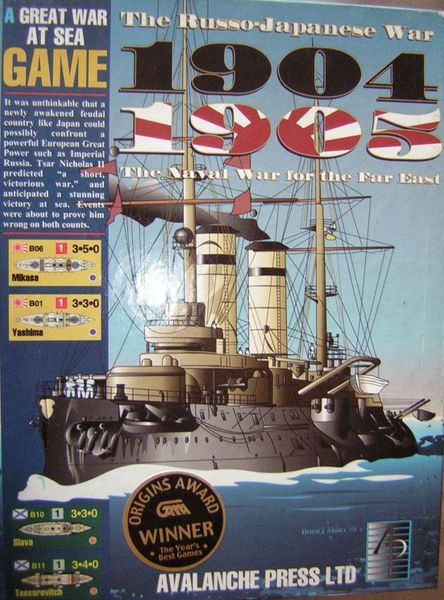Great War at Sea: 1904-1905, The Russo-Japanese War (1999) Board Game
Great War at Sea: 1904-1905, The Russo-Japanese War is a board game that simulates the naval battles between the Russian and Japanese fleets during the Russo-Japanese War of 1904. This conflict was a key event in early 20th-century history, as it marked the first time an Asian power had defeated a European power in a major war.
Game Components of Great War at Sea: 1904-1905, The Russo-Japanese War
How To Setup Great War at Sea: 1904-1905, The Russo-Japanese War
Setting up the game involves placing the operational map, which uses a staggered square (hex grid) system, and deploying the fleet counters according to the scenario. Each force is represented by a single counter, keeping the composition unknown to the enemy. Players pre-plot missions for their fleets, with some missions requiring more planning than others. The tactical map is used for resolving combat encounters.
Gameplay Mechanics and Game Objective
Player Experience
The game offers a blend of strategic planning and tactical execution, appealing to both recreationists and strategists, though it may lean more towards recreationists. Players must balance pre-plotted missions with the flexibility to react to enemy movements. The game’s historical accuracy and detailed rules make it engaging for those interested in the naval aspects of the Russo-Japanese War. However, strategists might find the operational depth somewhat limited.
Pros
Cons
Personal Thoughts on Great War at Sea: 1904-1905, The Russo-Japanese War
This game is ideal for wargamers and history enthusiasts interested in the naval aspects of the Russo-Japanese War. While it may not fully satisfy strategists looking for deep operational gameplay, it offers a compelling and historically rich experience for those who enjoy recreation and tactical combat. It’s a great addition to the **Great War at Sea series** and is recommended for those who appreciate detailed and accurate historical simulations.
We are supported by our audience. When you purchase through links on our site, we may earn an affiliate commission, at no extra cost for you. Learn more.

